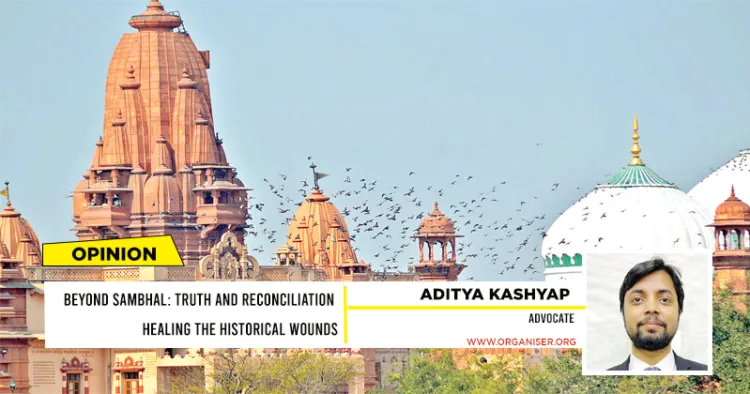The right to know the truth is a cornerstone of justice, reconciliation and the preservation of cultural memory. This principle extends beyond political atrocities and into the realms of cultural and religious heritage. In the context of religious spaces that were historically invaded, demolished, or repurposed by foreign invaders, the demand for truth becomes a delicate yet necessary undertaking. It also determines the questions of identity, collective memory, and the enduring wounds of history.
Identifying Religious Places
Culturally, religious structures have been more than places of worship. They represent cultural identity, societal values and the spiritual heritage of a community. Throughout history, foreign invaders have frequently targeted these spaces, demolishing them or transforming them to assert dominance. There are a plethora of examples from Sri Ramjanmabhoomi case, which after centuries of struggle it got resolved recently with the handover of the Janmasthan to the worshippers of Ramlalla, to Vishwanath Temple Varanasi – Gyanvapi structure case, Krishna Janmasthan in Mathura and Shahi Idgah issue and Sambhal’s Harihar Temple.
The list goes long.
Desecrating Pious Murtis
A basic overview of the disputes and claims in question reveal a sinister saga of centuries and demolition of temples and raising of Islamic structures in its place. On multiple occasions, the murtis of the ransacked temples were demolished and made a part of the new construction itself. Across South Asia, the Islamic invasions led to the destruction or modification of several Hindu, Buddhist, and Jain temples into mosques. Not only this, worldwide we have examples of Churches and other religious structures also being replaced with Mosques. One famous example is the Hagia Sophia in Istanbul, which was originally a Byzantine church, and was converted into a mosque after the Ottoman conquest. Its recent re-conversion into a mosque in 2020 rekindled debates about historical continuity and the preservation of heritage. targeting indigenous sacred sites globally, and replacing them with the invaders’ structures are nothing but symbolic of a deep-rooted disdain for the inhabitant’s religion and culture and an attempt to establish religious and cultural superiority.
The right to know the truth about religious spaces that have been invaded and demolished and structures raised thereon by foreign powers is not just a matter of historical curiosity; it is an essential part of cultural and spiritual justice
The right to know the truth about these historical changes stems from the broader principles of transparency, justice, and reconciliation. This right is enshrined in international human rights frameworks, recognising that communities deserve access to the historical facts that shape their identity. Knowing the truth about demolished or repurposed religious spaces serves several purposes, including preservation of cultural identity since understanding the past allows communities to reconnect with their cultural roots and reaffirm their identity.
Reconciling Conflicting Views
Acknowledging historical wrongs facilitates acknowledgment of injustices, creating a foundation for dialogue and healing. It also helps in promoting reconciliation since transparency fosters mutual respect and understanding between communities with differing historical narratives.
Therefore, the path ahead is that of truth and reconciliation. The right to know the truth about religious places that have been invaded and demolished and structures raised thereon by foreign powers is not just a matter of historical curiosity; it is an essential part of cultural and spiritual justice.
Harmonious Future
The right to know the truth must be respected and enforced by the Constitutional Courts with sensitivity to the complexities of history and faith. A prudent approach in this regard may be nuanced with unbiased academic and archaeological research, scientific surveys and inspections, preserving heritage by safeguarding surviving structures, open public dialogue and above all restorative justice by acknowledging historical wrongs, and restoring the places and sites to the community and allowing them to take care of these structures or premises for cultural revival initiatives.
While the journey towards uncovering and acknowledging the truth may be complex and often fraught with difficulties, yet it holds the potential to heal historical wounds and meet justice to the civilisation that is long due. By balancing truth with reconciliation, we honour the past while building a foundation for a harmonious future – because, out of the past is born the future.



















Comments